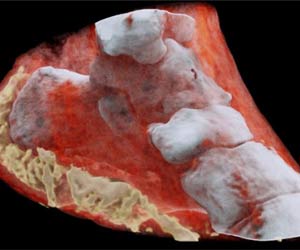
Researchers at the School of Stomatology, Lanzhou University, China discovered that radiation-induced neuronal injury was more apparent after X-irradiation. Under atomic force microscopy, the neuronal membrane appeared rough and neuronal rigidity had increased. The depolymerization, misfolding or denaturation of microtubule associated proteins might contribute to the destruction of the nutrient transport channel within cells after radiation damage.
Moreover, some hidden apoptosis-related genes are released through the regulation of several signals, thus triggering apoptosis and inducing acute radiation injury. Their experimental data also revealed that X-rays produced much severer radiation injury to cortical neurons than a heavy ion beam, suggesting that the heavy ion beam has a biological advantage over X-rays.
This could provide a theoretical basis for effectively improving the protection of normal brain tissue in future cranial radiotherapy. This article is released in the Neural Regeneration Research (Vol. 9, No. 11, 2014).
Source-Eurekalert











